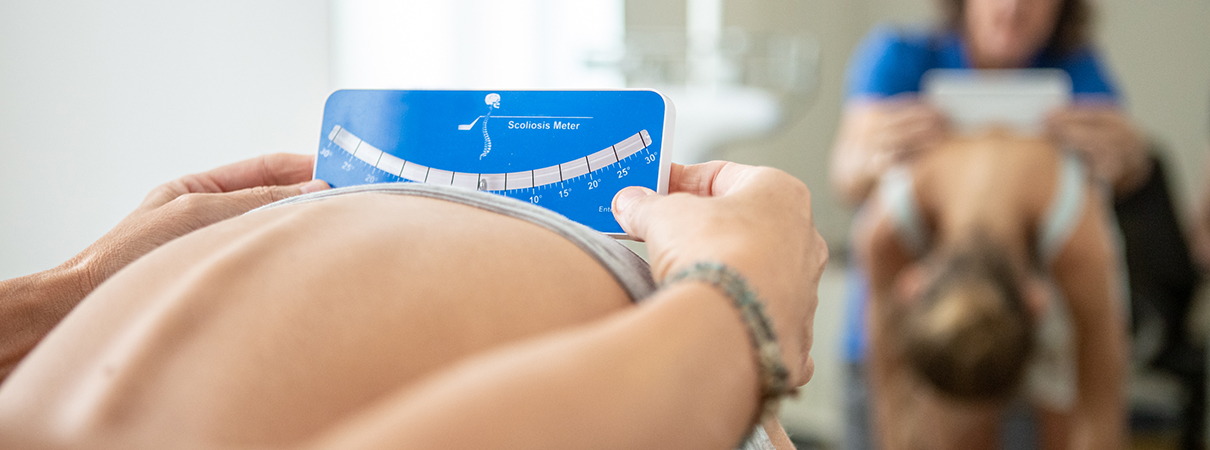Prevention is better than cure, and no physician or healthcare professional will ever tell you any different.
But in the case of scoliosis, a condition that is very hard to spot whatever the individual’s lifestyle choices, also during growth when it is particularly dangerous, what can we do to try and prevent or reduce the damage it may cause?
The term prevention refers to the various steps and actions taken to eliminate, or at least reduce, the risk of undesired events occurring.
In the health sector, there exist countless campaigns undertaken for the purpose preventing a range of problems, such as sexually transmitted diseases, and for highlighting the risks associated with unhealthy lifestyle choices, such as smoking and overeating fatty food.
In the case of scoliosis, prevention means identifying the problem at the optimal time — that is to say, early on! — and the best way to do this is through screening.
So, what exactly is screening, this useful instrument we have at our disposal for prevention?
What does it involve? Essentially it involves testing all the members of a given risk category with the aim of identifying those who are actually affected by the condition, so as to be able to treat them at the optimal time in order to prevent problems from developing in adulthood.
Early detection of idiopathic scoliosis has been a significant and growing commitment of orthopaedists since the early 1960s.
The goal of scoliosis screening is to detect the condition at an early stage, when the deformity can tend to go unnoticed.
At this stage it is still possible to avoid or reduce the need for more invasive methods of treatment, including surgery.
Screening is currently offered to youngsters at around 11 years of age, because the pre-pubertal period is when scoliosis is most likely to appear, and some studies have shown that the risk of it occurring is highest in this age group.
Isico Scoliosis Protocol
The Isico protocol for vertebral deformity screening in adolescence involves two clinical examinations: the Adams forward bend test and the measurement of plumbline distances.
Adams test
In the Adams test the patient is asked to bend the trunk forward, keeping the head and arms relaxed and the legs perfectly straight: if, as measured using a scoliometer, there is a greater prominence on one side of the patient’s back, then the patient could be affected by scoliosis and will therefore be referred to a specialist for further examination.
Measurements of plumbline distances
The measurements of plumbline distances are obtained with the patient standing, measuring the distance in millimetres between the C7 and L3 vertebrae, using a plumbline as a reference. The measurements are taken using a rigid ruler.
Screening is not usually performed by medical staff: it can be done by healthcare or non-healthcare workers, providing they have been appropriately trained by an expert in spinal disorders.
At the end of the screening examinations, subjects found to have positive test results are informed that they should be examined by a physician specialising in spinal disorders.
At this specialist examination, the physician may prescribe an X-ray examination, in order to have a full picture of the situation, and will also prescribe any necessary treatment.
Rehabilitation Therapy
Today there is evidence that an intensive inpatient exercise programme can modify the signs and symptoms of scoliosis, and significantly reduce the rate of progression.
Furthermore, when patients have access to a high standard of conservative treatment, the incidence/prevalence of surgery can be reduced significantly, too.
It has also been documented, and is generally accepted, that bracing alters the natural history of idiopathic scoliosis and that school screening reduces the number of surgically treated idiopathic scoliosis patients.
And what if the screening tests are negative? Is that the end of it?
Unfortunately, no, because scoliosis can still develop later on, as the youngster grows. In fact, not all 11 year olds have reached the pre-pubertal stage.
In particular, some girls will already be well developed, whereas others may still not be showing any signs of puberty. It is therefore crucial to be vigilant and monitor their growth.
Parents should recognise the importance of screening; to an extent, by following a few easy instructions, they can even do it themselves.
It is also important to have regular paediatric health checks, which in the peri-pubertal period should also include an assessment of the spine. In the presence of any risk factors, this assessment must be specifically requested.
It must, however, be recognised that what school-screening programmes offer the school-aged population is the chance to identify individuals who may be at risk of developing scoliosis; they do not identify those who have scoliosis.
There is something else that must be highlighted and clearly understood. School screening programmes aim to pick up on surface deformities; they are not designed to predict which scoliotic curves will progress to a type that will require some kind of conservative or surgical treatment.

